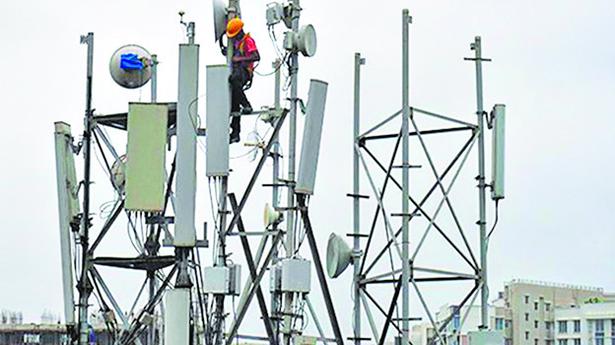
Review spectrum pricing mechanism for captive users to incentivise ministries: CAG to DoT
The Hindu
It suggested that the DoT should establish a permanent set-up comprising all stakeholders for a periodical review of spectrum planning, availability, allotments, assignments and pricing. This would expedite decisions for efficient management and optimal utilisation of spectrum in India
The Comptroller and Auditor General (CAG) has pulled up the Telecom Department for not finalising policy on spectrum assignment for captive uses and flagged the absence of spectrum price review for captive users administratively.
In its report titled 'Management of spectrum assigned on the administrative basis to government departments/agencies', the CAG asked the Department of Telecom (DoT) to review the spectrum pricing mechanism for captive users to incentivise ministries, departments and agencies, and for maintaining spectrum-management discipline.
"They may consider differential pricing, depending on the features and usage of various spectrum bands," the CAG said in a report tabled in Parliament on Monday.
It noted that despite receiving a legal opinion (July 2021) on its own reference, regarding the method for allotment of spectrum for captive uses, including government departments, the department had not finalised the policy for allotment and assignment of spectrum for captive uses/other commercial services with the approval of the Digital Communications Commission.
The DCC is the apex body for telecom policy formulation.
"DoT had also not reviewed the pricing of spectrum assigned for captive users administratively, on formulae basis since 2012, though a Committee had recommended for a periodical review of the pricing policy in 2013," the CAG report said.
There was no differential pricing for spectrum, depending on features and usage of various spectrum bands assigned to users, it observed.

The Union Budget unveiled on February 1, 2025, has come at a time of unprecedented global uncertainty and a flagging domestic economy. The real GDP growth is estimated at 6.4% for 2024-25 and between 6.3-6.8% for 2025-26, a far cry from >8 percent growth required annually to make India a developed nation by 2047. While much attention has been devoted to the demand stimulus through income tax cuts, not enough is said about the proposed reforms in urban development, tariff rationalisation, and regulatory simplification aimed at making Indian cities and corporates more competitive. Since the majority of economic activity is located in cities (urban areas account for ~55% of GDP) and produced by large corporates (~40% of the national output and 55% of India’s exports), the above-mentioned reforms have a pivotal role in improving India’s trend growth rate. Below we unpack each reform.












